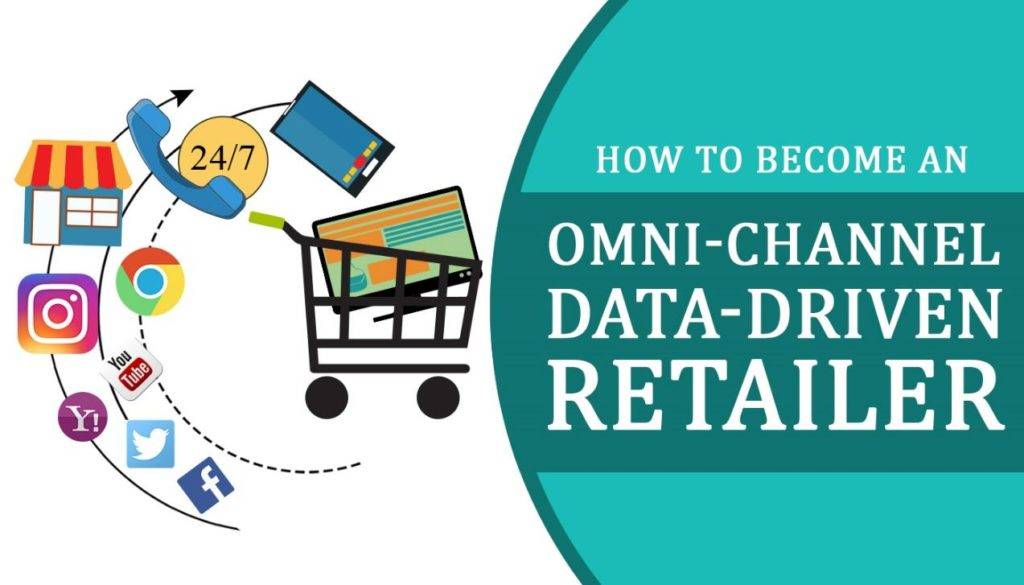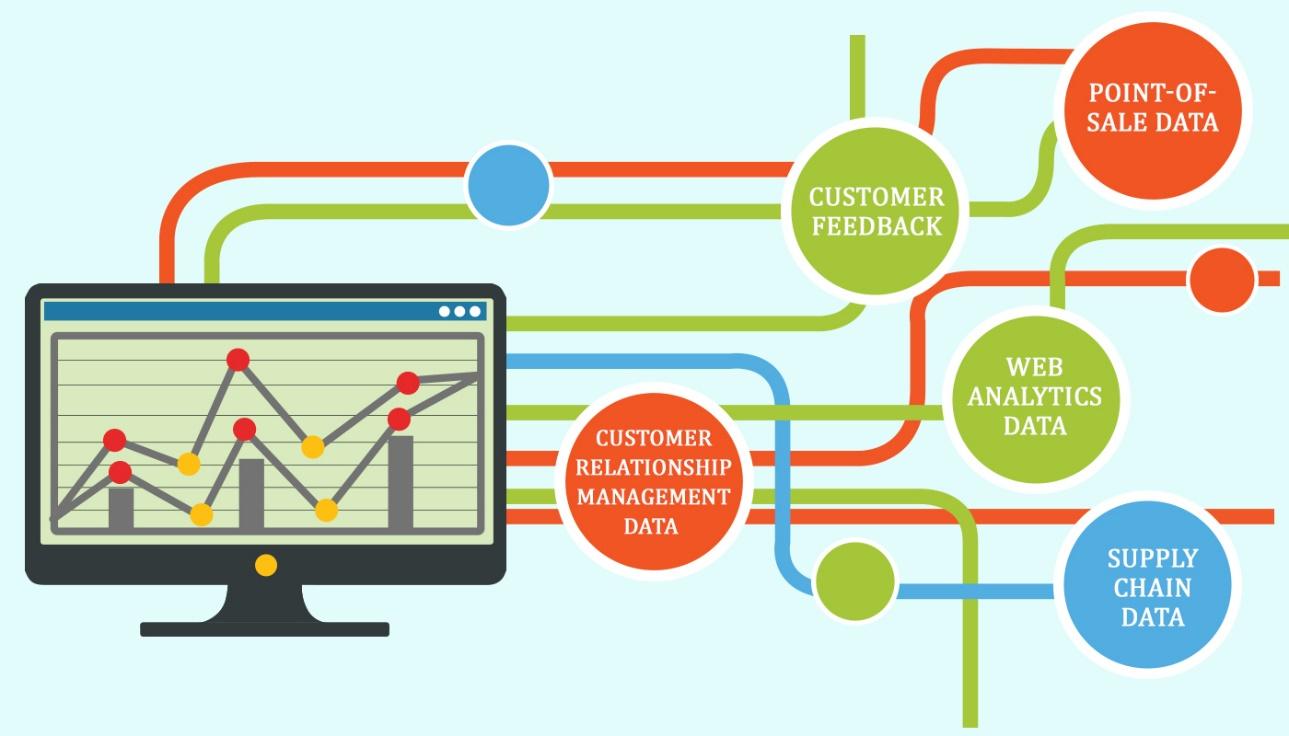In today’s digital age where customers are as likely to buy a product from an e-commerce website as from a brick and mortar store, delivering a seamless and value-adding shopping experience has become more important than ever before. The multiple shopping channels available to customers and the competition posed by other retailers have made it an absolute necessity for a retail business to integrate data inputs from different channels and use to it define an omni-channel shopping experience.
See also: Is Amazon Go the sign of the downfall of the retail workforce?
As a Big Data and BI influencer, I have worked with a large number of businesses within and beyond the retail industry. Using this knowledge and expertise, I have developed a 5-step approach that businesses operating in the retail sector can adopt to meet the expectations of their customers and become an omni-channel, data-driven retailer.
Step 1: Collect the right type of customer data
In their journey to becoming a data-driven organization, businesses are required to collect the right type of data — data that can help them improve the customer experience and maximize the profit they gain from their online and offline channels.
For example, a business that operates brick and mortar stores would probably like to try different layouts and floor plans to determine which maximizes the chances of a sale. To do this, they will require sales breakdown for each store. On the other hand, since in online context you can personalize customer journeys, a business with an eCommerce website will be required to collect data about their purchasing history, browsing behaviors, and more.
Apart from customer data, competitor data is another type of data that you need to collect. Collect data regarding price, customer reviews and ratings, and sizing and use the intelligence gain to optimize your product catalogue and customer journey.
Gathering data without analyzing is not only a waste of time, it will also raise doubt and suspicion among your customers. Therefore, it is also important not to collect data that you are not going to use.
Step 2: Integrate your data sources
Once you have determined the type of data you want to collect, the next step is to identify the channels that can provide you the data. Retail businesses collect massive amounts of information from a wide range of channels. In fact, each successful transaction presents a data collection responsibility to retail businesses. However, the sheer amount of data and the disparate sources from which they are collected may make it quite an impossible task for businesses to organize the data and generate valuable insights from it.
Since a large amount of data collected by a retailer is processed through its Enterprise Resource Planning (ERP) system, the platform can be used for the purpose of data organization. Alternatively, there are a number of other BI platforms available that businesses can use to improve their data collection, organization, visualization, and analytical capabilities. These platforms can collect data from a large number of sources, including:
- Point-of-sale data
- Customer feedback
- Web Analytics data
- Customer Relationship Management data
- Supply chain data
In our next webinar Ian Macdonald, Principal Technologist at Pyramid Analytics will show how a BI platform can help you amalgamate data and get a unified and accurate view of all your customer, competitor, and corporate data.
Step 3: Create a data-driven culture
Succeeding with data is not just a matter of investing in a BI solution or hiring a data analyst or scientist. Instead, it requires you to develop a data-driven culture that involves people from all the departments of the organization. This is particularly important for retail businesses because every single department of a retail business can add something significant to the data value chain.
For example, the finance department can help you determine if the prices are consistent across all channels or if there is a particular store or platform that’s not delivering the desired performance. Similarly, the people responsible for supply chain management can provide you information regarding supply chain issues and how they impact your order fulfillment capabilities. To summarize, from sales to marketing to HR and supplier relationship management, every single department of your organization can provide you answer to an important question. Therefore, establishing a data-driven culture and involving all the functions is imperative to become a data-driven omni-channel retailer.
Step 4: Do not be confined by reporting cycles
While automated pre-built reports offered by a BI and analytics solution can help you analyze data in a real-time manner in a more efficient manner, the routine reporting capabilities may also limit your ability to extract maximum value from your BI investment.
An ad-hoc analysis is a viable solution to this problem. It will allow your employees to adopt an innovative approach towards data analysis and get a deeper, more precise, and comprehensive view of your existing customers. Also, since Ad-hoc analysis solutions are built specifically for users, they ensure a high adoption rate. This, in turn, makes business intelligence accessible to every single person in your organization, allowing them to contribute to the data value chain in their own unique way.
Step 5: Look beyond your business
In order to become a true data-driven omni-channel enterprise, businesses should look beyond the data sources present within the organization. Consider the data sources located externally. The most common yet an important external data source is social media. Customers’ feedback about your business on various social media platforms can offer you a wealth of information, which you can use to optimize your customer journey.
Other unconventional external data sources that your business could benefit from include:
- Search result data
- Demographic information collected by different surveys
- Online rankings of web pages and TV ads
Once you have collected information from all these channels, integrate it with your existing data and use a BI tool to identify trends and patterns and to predict customer behavior.
What have we learned?
From the evolution of e-commerce to the increasing use of social media and smartphones, the retail environment has gone through a multitude of changes over the past few years. This has led retailers to adopt an omni-channel approach that can enable customers to interact with and buy a product from a retailer at any time via any platform. However, in order to leverage the profit maximization potential of omni-channel strategy, businesses must utilize the data available to them in the right manner.
While the 5-step strategy mentioned above can help a business make progress towards their ultimate objective of becoming a data-driven, omni-channel enterprise, each and every business has its own unique needs, and therefore, a thorough evaluation of these needs and a customized approach to fulfill them is necessary.
If you are interested in learning more multi-channel retail analytics, you can register for my upcoming webinar. You can also follow me on Twitter and LinkedIn to stay updated with the latest in BI and journey science.












